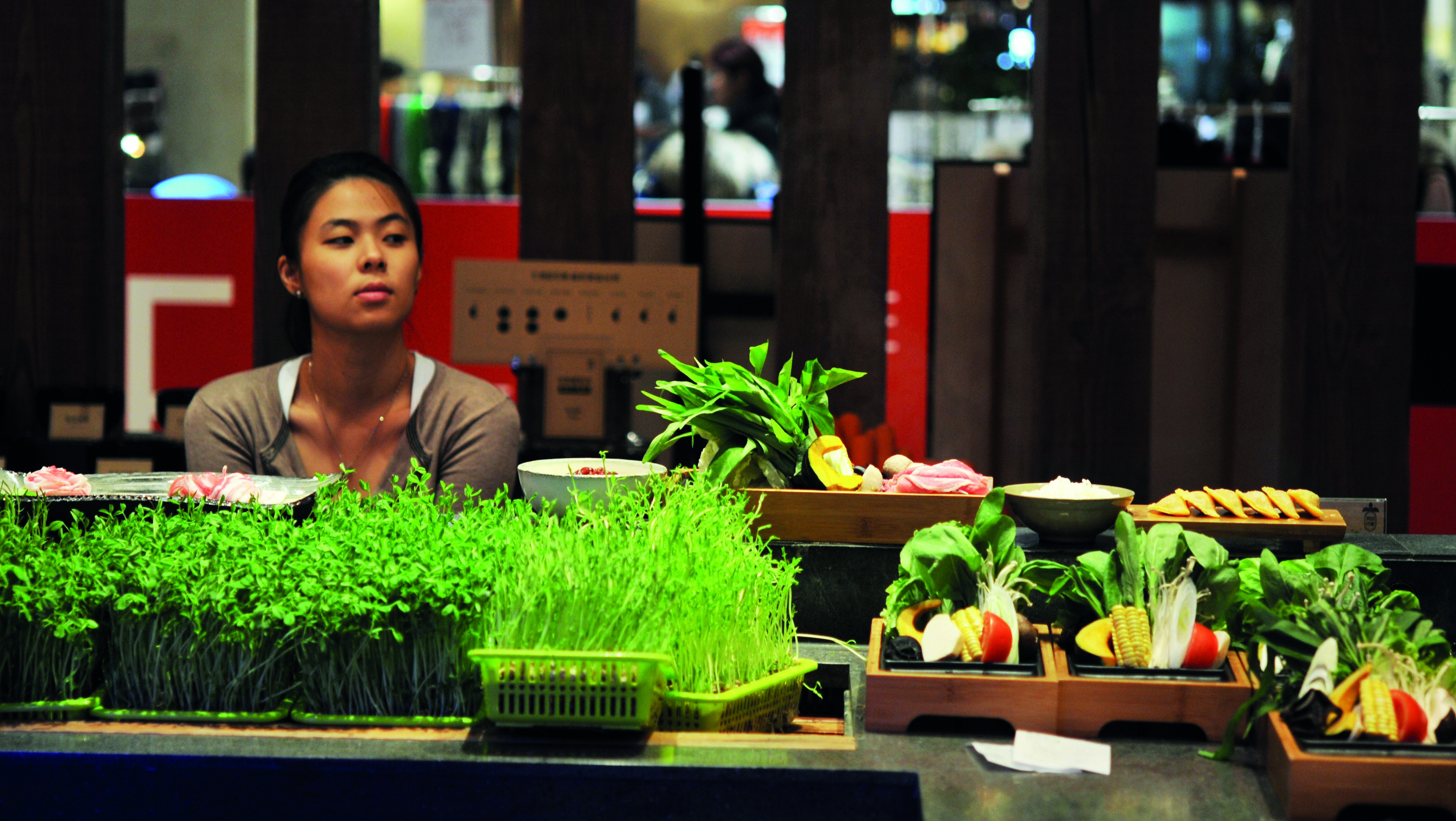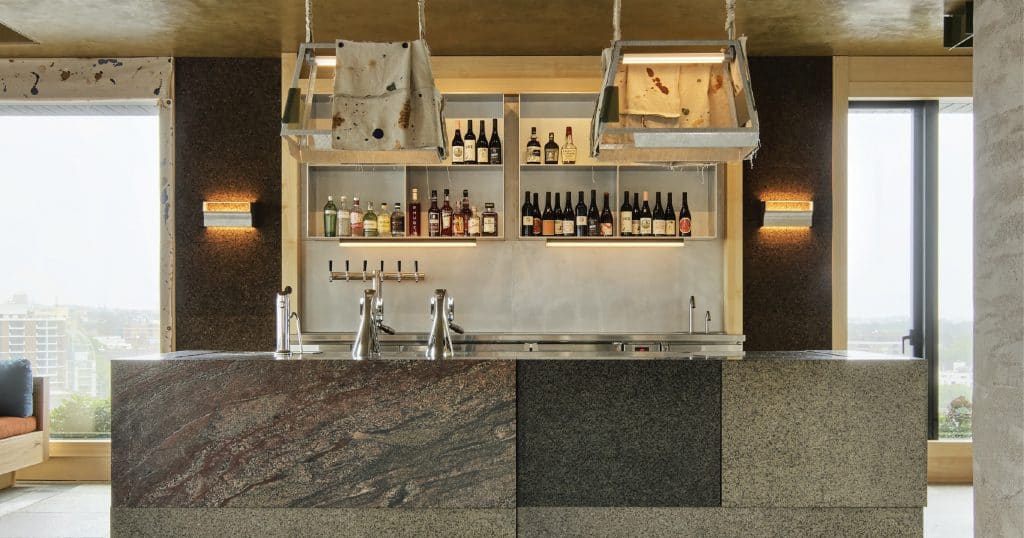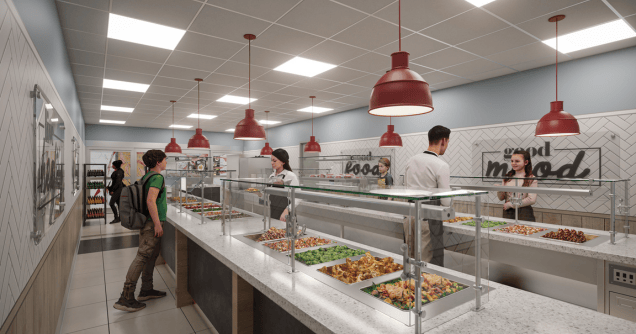
Centred around family-style dishes, sharing is at the heart of Chinese dining culture. Raucous places around mealtimes, restaurants traditionally pack out with guests huddled over tables bowing under the weight of food. However, walking through China’s urban areas today you’ll increasingly see a different scene: tables of solo diners quietly refuelling with a quick bite to eat.
Globally we’re embracing singledom, and China is no exception. Today, the country is home to around 240 million singles – a number that’s set to continue growing, with more Millennials delaying or shunning marriage and divorce rates rising year on year.
In 2017, a Boston Consulting Group (BCG) and Alibaba consumer trends report found the number of Chinese urbanites living alone has increased from 5% to 16% in 10 years. Explaining the increase, the report highlights reasons including more focus on careers and social media making it easier to keep connected virtually. It has also come with “a profound change in people’s perceptions of remaining single.”
Moving away from the days of “stigmatised” singles, China has a swelling consumer demographic that’s more likely to live, dine, travel, and pursue activities by themselves.
Facing increasingly demanding urban lifestyles, these consumers are looking for convenience. Perhaps it’s unsurprising then that the economic impact of solo dining can already be seen in the food-delivery market. A marketing strategy analyst at market research firm Daxue Consulting, Allison Malmsten, explains that “The proportion of food deliveries for one person has increased among people of all ages, but the trend is that younger people are more likely to order food for one. Overall, according to food delivery app Ele.me’s statistics, orders for solo meals in rose by 26% between 2016 and 2017.”
Also as of 2017, the Financial Times reports that 65% of orders on competing food delivery service Meituan-Dianping were placed by “unmarried” customers.
But what about options for dining out? According to a recent survey from market research company Kantar, 46% of respondents had eaten alone within the past 24 hours and 16% claimed they prefer eating out alone, state media Xinhuanet reports.
Needing to compete with what Shanghai-based food and beverage consultant and blogger Rachel Gouk describes as often more “efficient and cheap” delivery options, she finds “fast casual and quick service operators attractive [options] for solo diners.” They’re looking for something that’s “speedy and hassle-free.” She also adds: “The environment and layout for fast casual venues is very important. Tables need to be comfortable, yet small enough to encourage high turnover.” And when it comes to mass-market appeal, for daily meals local food still reigns supreme.
Food you’d eat at home
Set in the basement of a Shanghai mall and office compound, Mi Xiang Yuan (Fragrant Rice Garden) caters to the time-pressed crowd looking for an easy meal. Owned by longtime restaurateur Anthony Zhao, every lunchtime the restaurant fills with tables of one alongside small groups of colleagues. Zhao explains that Mi Xiang Yuan is designed with single diners in mind, serving up what he calls “simple sets” – Shanghainese lunchboxes offering single portions of family-style dishes, including rice, meat, vegetables and soup.
“We’re mostly targeting young Chinese office workers,” says Zhao. “Everything is pre-prepared. To order, you scan the QR code on your table which brings up the menu, you pay on your phone, and the food will be at your table within five minutes – even when we’re at our busiest.” It’s food that Zhao calls “familiar” and “clean”, with an emphasis on quality ingredients, because he finds that diners are looking for something that they understand and trust. “The sort of meal you’d eat at home,” he explains.
Making individuals feel comfortable
While lunch is where Mi Xiang Yuan thrives, the team recently added a dinner menu for customers looking for a quick bite after work. Zhao believes that a number of young Chinese don’t want to – and can’t – cook for themselves. “If you’re one person, cooking two dishes is already lots of work. And it almost costs the same as eating out at places like this.”
At the other end of the scale, the epitome of social dining, hotpot dinners traditionally take place over the course of an evening with mountains of meat and vegetables loaded into giant cauldrons of broth at the centre of large tables.
However, in recent years even notable hotpot restaurants have adapted their offerings to also cater to customers dining alone.
The country’s largest hotpot chain, Haidilao made moves to welcome tables for one offering half portions and giant plush toys as company. At Taiwanese-style hotpot restaurant, Qimin Hotpot Marketplace, individual soup pots line kitchen-side countertops and banquet tables.
“The number of single diners is increasing, especially in cities such as Shanghai, Taipei and Tokyo,” says a Qimin spokesperson. “Our products have gradually adjusted to single or small family-sized [servings] to represent the needs of the community.”
It’s all about making individuals feel comfortable and welcome in a traditionally communal space.
Single diners currently account for roughly 8% of customers at Qimin’s mall-based branch in downtown Shanghai, the majority of whom are white-collar workers with the simple needs for convenience, comfort, and quality.
Daily convenience aside, China’s young singles are happy to spend money and they’re after experiences. Sharing findings from a Sinolink Securities report analysing the spending habits of consumers born between 1985 to 1995, China Daily highlights that this demographic is largely financially independent, with over half willing to spend 10% to 30% of their income on food and drink.
Michelin-starred restaurant Taian Table has been on the radar of singles looking for luxury since it first opened in Shanghai in 2016. Showcasing contemporary European cuisine via seasonal tasting menus, Taian Table is known for its interactive layout.
The intimate 28-seater restaurant steers clear of the potentially alienating set-up of traditional Western fine dining restaurants, opting for a communal bar around an open kitchen that acts as the “centre stage”.
Despite not directly targeting single diners, chef and founder Stefan Stiller says that Taian Table sees, “quite a number of guests dining alone”. The concept is built around interaction with the chefs, rather than relying on dining companions. As they put it: “Diners are spectators in the arena and are encouraged to interact with chefs and staff as they introduce each dish.”
Stiller also notes that the team makes extra effort to “interact and engage” with diners who come in on their own.
While Chinese cuisine still largely lends itself to communal dining experiences, the increasingly influential demographic of young singletons on the lookout for quick meals to slot into busy lifestyles and with cash to spend on experiences could well pave the way for a solo dining revolution.
Tina Nielsen




